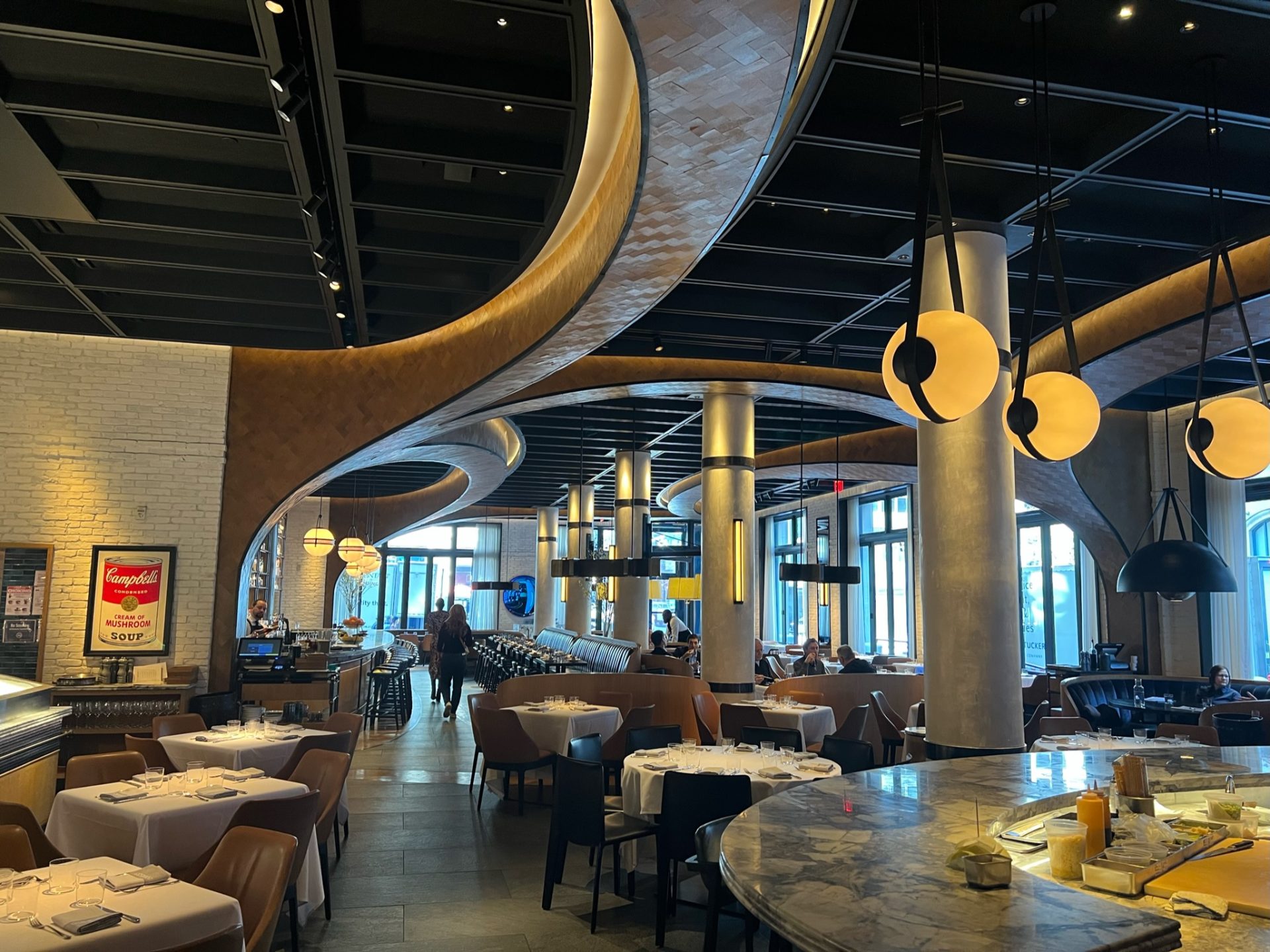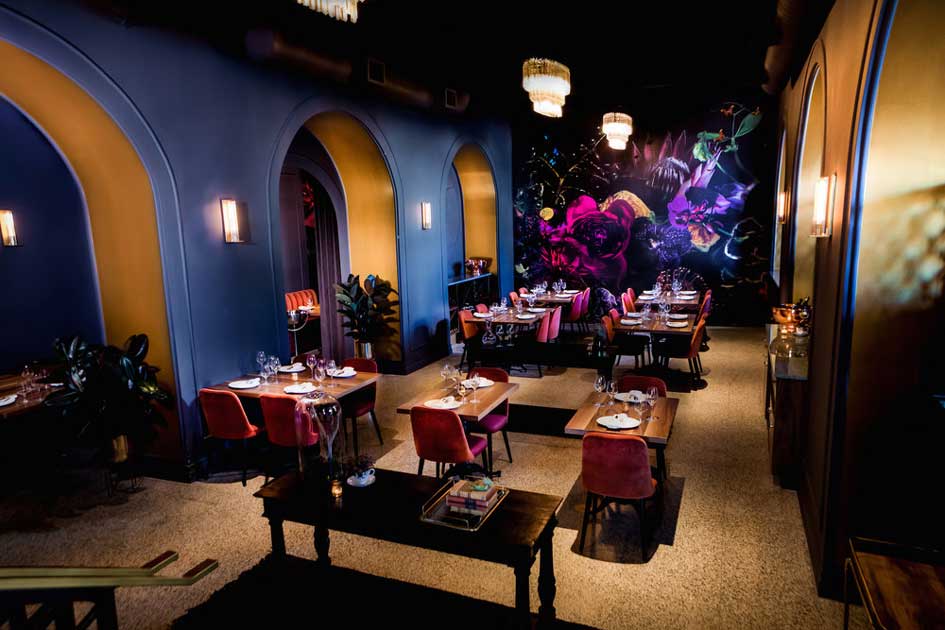Best Asian Restaurant Islamabad: Experience Tastes from Across Asia
Savor Authentic Eastern Food With a Pan-Asian Spin for a Culinary Adventure
Getting started on a culinary trip through authentic Eastern food, enhanced with a Pan-Asian spin, supplies an one-of-a-kind possibility to discover the rich tapestry of tastes that specify the region's varied cooking traditions. As you contemplate these luring recipes, think about the social narratives and historic influences that form them, each bite offering a story waiting to be discovered. Best ambiance restaurants Islamabad.

Discovering Pan-Asian Tastes
In the world of global gastronomy, Pan-Asian food stands out for its impressive variety and the harmonious interaction of flavors from numerous Asian societies. This culinary approach commemorates the one-of-a-kind components and rich practices found across the continent, creating a tapestry of preferences that is both fascinating and enjoyable. Secret to Pan-Asian food is its ability to stabilize contrasting flavors-- pleasant, salted, spicy, and sour-- while highlighting the freshness and high quality of each component.
From the umami-rich soy sauce of Japan to the intense chili peppers of Thailand, Pan-Asian cuisine supplies a substantial scheme of flavors. These aspects are often integrated in creative means, boosting dishes with layers of complexity. For example, making use of aromatic herbs such as lemongrass and cilantro, common in Vietnamese and Thai food, adds a refreshing illumination to dishes, while the consolidation of coconut milk supplies a luscious, abundant structure.
The emphasis on fresh produce and fragrant spices makes sure that each meal is not only a feast for the taste yet also for the senses. Pan-Asian cuisine invites restaurants to start a culinary journey, checking out the vast and varied landscapes of Oriental gastronomy with every bite.
Combination Meals to Attempt
While Pan-Asian cuisine is commemorated for its conventional flavors, the contemporary culinary landscape is significantly welcoming blend recipes that blend these classic components with impacts from various other regions. This innovative approach not just honors the abundant heritage of Oriental cookeries however also presents novel taste experiences that interest modern tastes buds.
An archetype of such a combination recipe is the Korean-Mexican taco, where marinated bulgogi beef is wrapped in a warm tortilla, covered with kimchi and a zesty gochujang-infused salsa. This combination weds the strong, tasty tastes of Korea with the vivid, fresh components of Mexican food. Likewise, sushi burritos have actually gotten appeal, amalgamating the delicate artistry of Japanese sushi with the passionate, hand-held comfort of a burrito, usually including combination ingredients like tempura shrimp and avocado with a drizzle of wasabi mayo.
Another notable recipe is Thai curry ramen, which infuses the velvety, fragrant seasonings of Thai curry right into the reassuring brew of traditional Japanese ramen, creating a harmonious blend that entices the detects. These fusion meals expand beyond simple uniqueness; they stand for a cooking discussion in between cultures, motivating exploration and innovation worldwide of Pan-Asian food.
Vital Ingredients and Seasonings
To truly appreciate Pan-Asian food, one must understand the necessary ingredients and spices that create its structure. This varied culinary style draws from a rich tapestry of Asian traditions, employing a harmonious blend of flavors and textures. Secret ingredients include soy sauce, fish sauce, and oyster sauce, which impart a full-flavored umami depth vital to Oriental dishes. Corresponding to these are rice vinegar and mirin, lending joel robuchon a delicate level of acidity and sweet taste.
Fragrant components are pivotal, with lemongrass, garlic, and ginger being common across numerous Pan-Asian dishes. These components offer a great smelling base that boosts the intricacy of flavors. Seasonings such as star anise, cardamom, and cinnamon introduce warmth and personality, echoing impacts from areas like China and India.

Cooking Techniques and Tips
Mastering the art of Pan-Asian food calls for familiarity with its distinctive cooking strategies, each adding to the dynamic tapestry of tastes this cooking custom is celebrated for. Central to these methods is the stir-fry, a rapid cooking method that protects the nutritional stability and brilliant shades of active ingredients. Making use of a frying pan, the stir-fry approach enables even warmth circulation, crucial for achieving the particular appearance and taste equilibrium of Pan-Asian recipes.
Another fundamental technique is steaming, especially prevalent in Chinese cuisine. This gentle technique maintains the natural tastes and nutrients of ingredients, making it suitable for fish and shellfish and vegetables. Dumplings, a cherished staple, typically gain from steaming, resulting in soft, delicious structures.
Barbecuing, also integral, imparts great smoky depths to dishes such as Korean bulgogi or Japanese yakitori (Instagrammable restaurants Islamabad). This strategy usually includes seasoning ingredients, permitting flavors to permeate deeply prior to cooking over an open fire or warm plate
Last but not least, understanding the art of balancing flavors-- pleasant, sour, salted, bitter, and umami-- is crucial. Effectively layering these aspects can elevate a recipe from average to phenomenal, using a complex and pleasing culinary experience that embodies the significance of Pan-Asian food.
Dining Experiences Worldwide
Around the world, Pan-Asian cuisine uses an unmatched eating experience, commemorated for its abundant tapestry of flavors and vivid presentations. This cooking phenomenon has anonymous transcended social limits, capturing the hearts and tastes buds of food enthusiasts worldwide. In worldwide cities like New York, London, and Sydney, Pan-Asian restaurants act as fusions where culinary customs from Thailand, Japan, China, and past converge, supplying restaurants with a diverse mix of dishes that highlight the area's diversity.
The international appeal of Pan-Asian cuisine hinges on its capacity to offer both authenticity and advancement. Chefs masterfully wed typical active ingredients such as lemongrass, soy sauce, and miso with contemporary techniques, leading to recipes that are both refreshingly brand-new and acquainted. This blend allows diners to start a cooking trip that values heritage while welcoming modernity.
In addition, dining experiences are elevated through thoughtfully developed environments that reflect the principles of Pan-Asian aesthetics. From minimalist Japanese-inspired interiors to vivid Thai-themed spaces, each restaurant supplies a special setting that enhances the cooking offerings. Because of this, patrons are not merely eating a dish yet partaking in a social experience, making Pan-Asian dining a really international phenomenon.
Conclusion
The exploration of Pan-Asian food uses an extensive understanding of the complex interplay of tastes and cooking traditions across Asia. By embracing blend meals such as Thai curry ramen and sushi burritos, the culinary journey not only highlights the flexibility of typical active ingredients however additionally showcases ingenious modern strategies. This gastronomic journey, enriched by cooking approaches and necessary spices, provides click resources an unique chance to appreciate the multiculturalism and culinary artistry that define Pan-Asian cuisine on a global scale.
Embarking on a culinary journey through authentic Oriental food, boosted with a Pan-Asian twist, offers a special opportunity to check out the abundant tapestry of tastes that define the area's varied cooking customs.In the realm of worldwide gastronomy, Pan-Asian food stands out for its exceptional diversity and the unified interplay of flavors from numerous Oriental cultures. Trick to Pan-Asian cuisine is its ability to balance different flavors-- sweet, salted, spicy, and sour-- while highlighting the freshness and quality of each component.
